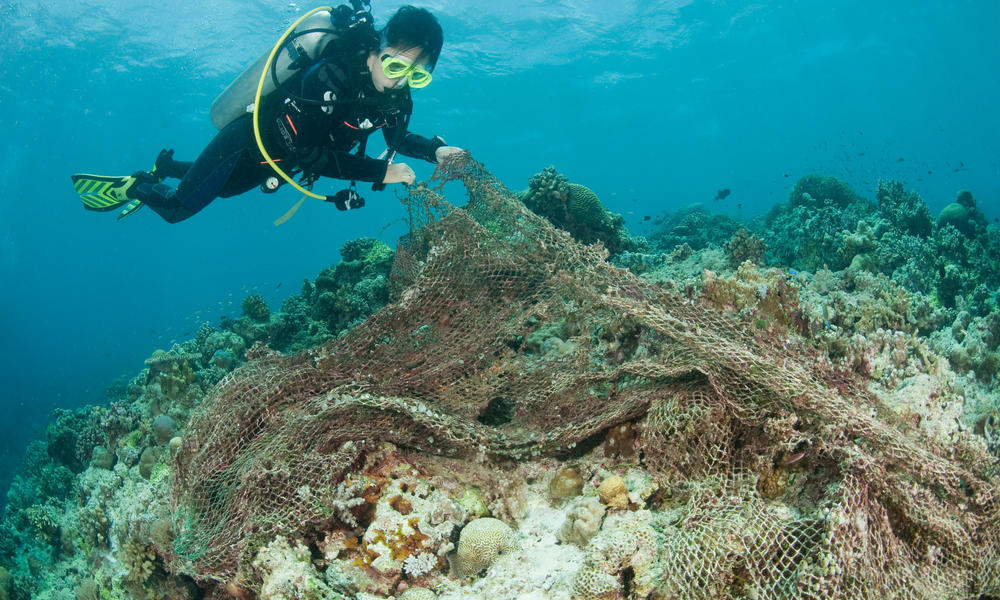About Us
About Bycatch Aquarium Nets
How is our net so effective?
Contact Us
More on Commercial Bycatch Issues
A ghost net is a fishing net that’s been lost or abandoned in the ocean. They are one particularly egregious part of the global ghost fishing problem, which includes fishing gear abandoned in the water. Any net or line left in the ocean can pose a threat to marine life.
Just because a net is no longer used by fishers doesn’t mean it stops working. These nets continue to trap everything in their path, presenting a major problem for the health of our oceans and marine life.
Ghost nets don’t only catch fish; they also entangle sea turtles, dolphins and porpoises, birds, sharks, seals, and more. These animals swim into nets, often unable to detect them by sight or sonar. The nets keep animals from moving freely, cause injuries, and keep mammals and birds from rising to the surface for air. Since hundreds of animals can be caught in a single net, you can see just how monumental this threat is. And ghost nets harm coral reefs too—breaking corals, exposing them to disease, and even blocking the reefs from needed sunlight.
Ghost nets are also a major contributor to the Oceans plastics crisis. Most modern nets are made of nylon or other plastic compounds that can last for centuries. According to a 2018 study in Scientific Reports, ghost nets make up at least 46 percent of the Great Pacific Garbage Patch. Those abandoned fishing lines and nets that do breakdown never go away; they just become smaller pieces of plastic. Marine animals mistake this microplastic for food and eat it, which can harm internal organs, keep them from eating, and expose them to toxic chemicals.
 © Jürgen Freund / WWF
© Jürgen Freund / WWF
A diver removes a ghost net that is choking coral reef
Exorcising ghost nets from our oceans will require commitment, cooperation, and innovation." WWF
